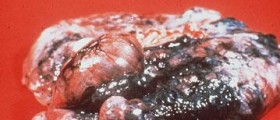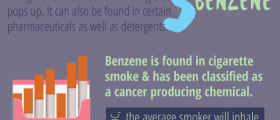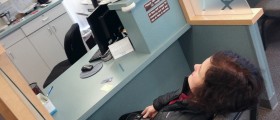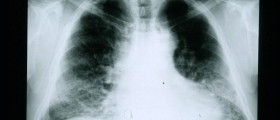
As the name itself may suggest, carbon monoxide poisoning occurs once a person inhales enough of this gas. Taking into consideration that CO is a gas which has no color, taste and smell and does not cause any forms of irritations, it is quite hard to notice when and how one gets exposed to it.
Nevertheless, this gas can easily kill a person, once enough of it has been inhaled. We usually get in touch with the CO through the incomplete process of fuel and organic matter combustion. Namely, while the full combustion distributes the second oxygen supply to the CO2 or carbon dioxide, lack of this amount of oxygen results in the formation of this harmful gas, carbon monoxide.
This gas can be found in many situations we are prone to get into during our daily lives. Basically, motor vehicles, gasoline-powered devices, heaters and cooking appliances are just some of the most common producers of this gas.
Signs and Symptoms of Carbon Monoxide Poisoning
There are specific sets of symptoms which bear witness of an occurrence of carbon monoxide poisoning. Basically, some of the signs which are commonly seen in these situations are confusion, headaches, vertigo, symptoms of flu and general feelings of being lightheaded. However, in situations where the exposure to this gas has been much more serious, the symptoms become more severe too.
In case of serious signs of CO poisoning, the nervous system and the heart may be jeopardized. Death can occur in this stage too, making such exposure fatal. Once the poisoning is acute, taking place in the long run, the symptoms may come and go, appearing over and over again as long as the exposure itself remains repetitive.
Pregnant women should be very careful and avoid exposure to this gas, since it can jeopardize both their health and the health of the fetus they are carrying. For all other cases of chronic poisoning from CO, depression, confusion and even memory loss, along with other cognitive impairments, all can be possible scenarios. The lack of oxygen in the blood triggered by CO poisoning can lead to hypoxia and many other subsequent health issues.
If the poisoning is acute, it is likely to affect the organs which depend on a steady supply and use of oxygen, being the central nervous system and the heart predominantly. Often, in cases of acute CO poisoning, the symptoms may be mistaken for the common cold, flu, or even food poisoning or certain stomach problems. However, once the central nervous system gets affected by the poisoning, more severe symptoms are bound to appear, including delirium, hallucinations, seizures, respiratory failure or even death, among other signs, signifying a much dire condition.
The main problem with diagnosing CO poisoning and treating it timely is the fact that the neurological symptoms appear too late, once the intellectual functions have already been compromised and short term memory loss has already taken place. Some additional signs of this stage are dementia, amnesia, irritability, strange gait, impaired speech, blindness and severe depression which might strike people who have never been depressed before.
This set of symptoms may appear between 2 to 40 days and 50% of sufferers are bound to experience some of these.
On the other hand, in cases of chronic CO poisoning, if the exposure is low, lightheadedness, depression, confusion, memory loss, vomiting and nausea are the most common signs. Chronic loss may not be connected with long-term effects and, in most cases, once the source of the gas has been removed and the exposure stops, the symptoms disappear. Yet, this only happens in cases of mild or low levels of gas exposure.
Still, this problem should be taken seriously since there have been noted cases of people suffering from permanent memory loss and learning problems after being chronically exposed to CO over the course of 3 years.
Causes
Some of the most common sources of this gas in households and offices are the natural atmosphere, improperly adjusted gas stoves, automobile exhaust fumes, fumes from burning wood and even undilluted exhaust of warm cars.
Even leaf blowers or lawnmowers, along with pressure washers, chainsaws, welders and other such devices, all produce CO we breathe in once we handle them. Those who enjoy SCUBA diving may breathe in CO once the equipment is not set up properly. Furthermore, even riding in cars and trucks has lead to CO poisoning, along with being near generators and propulsion engines on boats.
All in all, there are many different forms of possible CO sources and we have to be very careful once getting in touch to any of these.
Treatment Options
The first step towards the treatment is removing the source of CO or evacuating the patient from the poisonous environment. If the patients have lost consciousness, they might require CPR or oxygen given through masks. Even though breathing normal helps one recover from CO poisoning, this specially administered oxygen is more effective and takes less time in order to give positive results.
If the damage done by the poisoning is more serious, medications may be necessary, given hand-in-hand with the appropriate respiratory support.
More than 40,000 people seek help regarding CO poisoning every year and this occurrence is the main cause of over 50% of deaths due to poisoning. In the US, more than 200 people die because of CO poisoning they got exposed to through the fuel burning equipment they use. Therefore, it is very important to know the symptoms of this condition and react timely in order to seek medical assistance.

















Your thoughts on this
Loading...